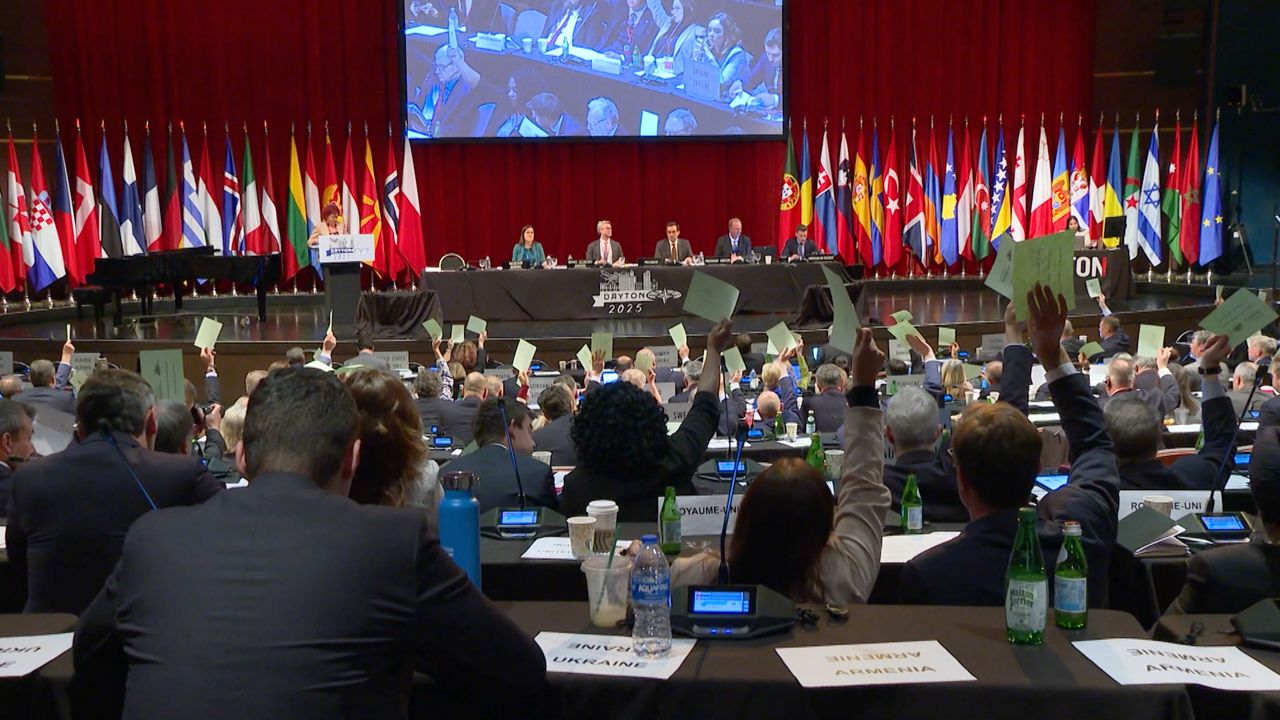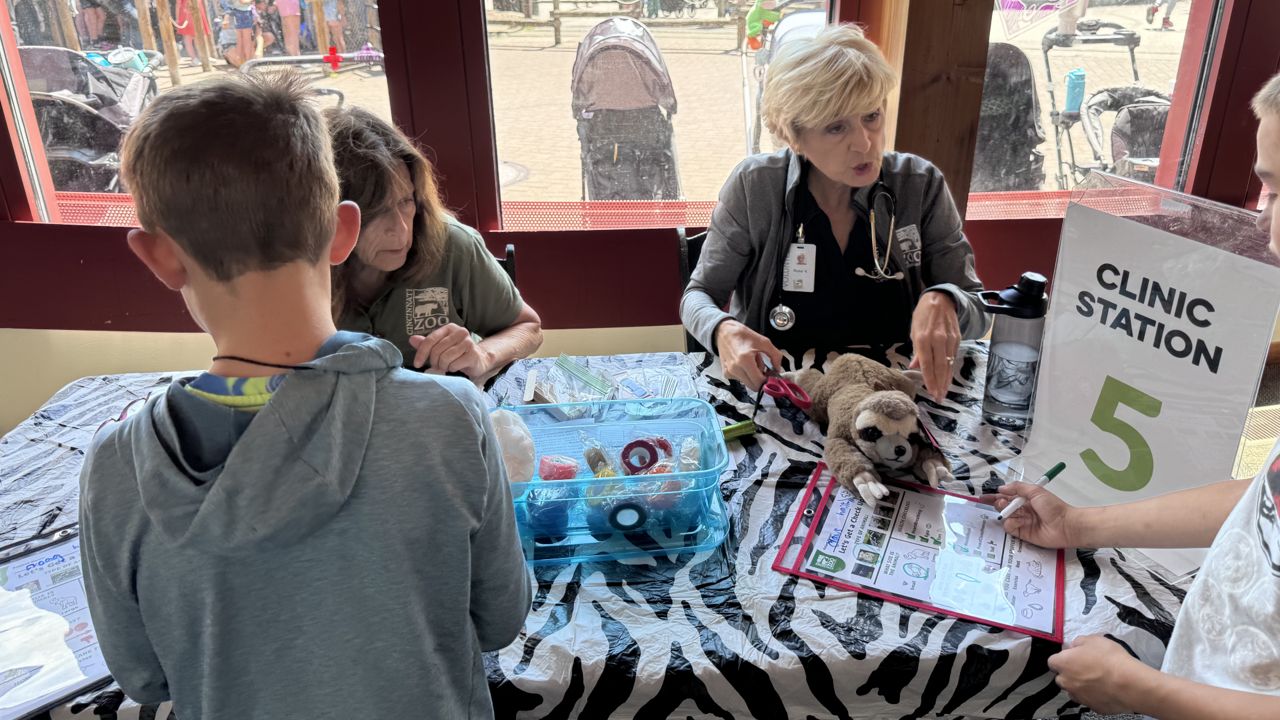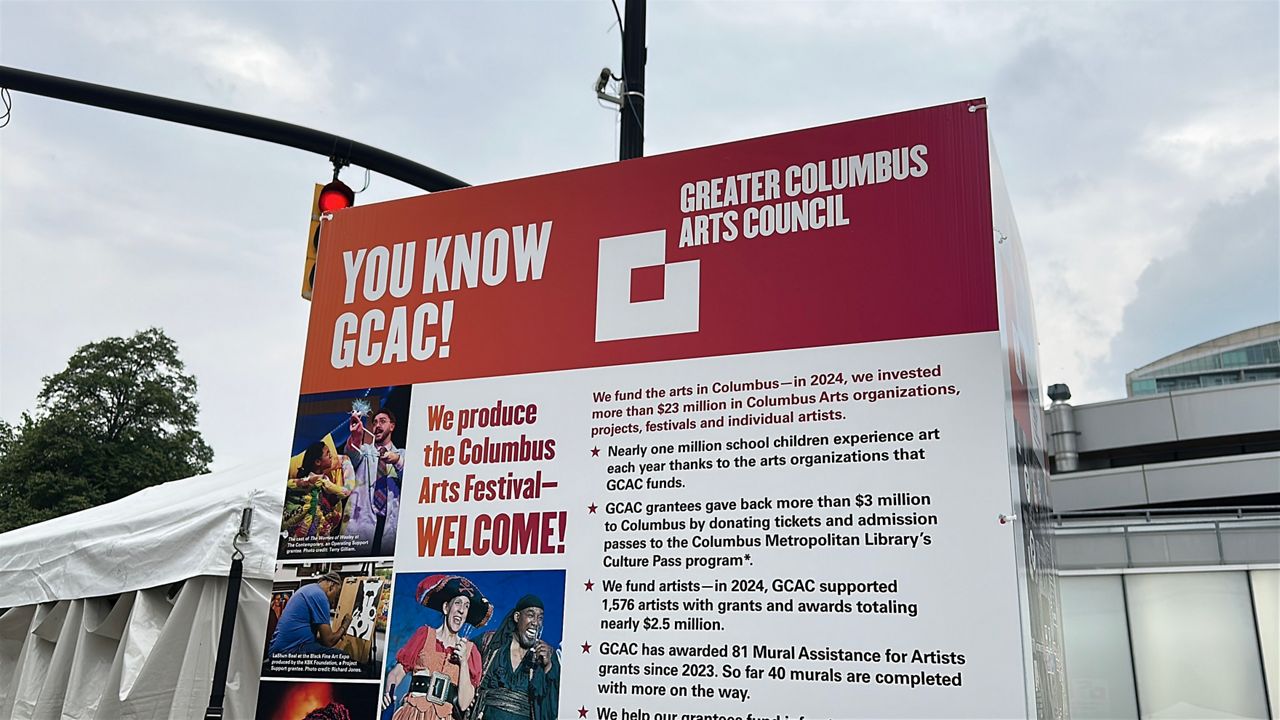DAYTON, Ohio — NATO is comprised of 32 different countries, all coming together as allies for the betterment of the world.
But how do all these countries communicate with each other during an international conference? Through technology and interpreters.
“So, you see, this is where the technician is and controls the sound, which is very important, and we have the various booths. This is for the French,” said NATO interpreter, Elisabetta Ullman.
It’s an aspect of the NATO summit that can sometimes be overlooked, but is vital to the success of communication. Interpreters are the glue that keeps these countries together. In soundproof booths, Italian, French and Spanish interpreters listen to speakers and interpret in their language to the delegates who need it.
“So, we have a mic. So, we see the speaker and we press the mic,” said Ullman.
For hours Elisabetta Ullman and her partner interpret dozens of different committee meetings in Italian.
“We get 30 minutes each, and we relay. So, you one, we help each other out,” said Ullman.
They speak the language of their choice into the mic and then the delegates listen through an earpiece that is given to them at their desk.
The interpreters say they were trained for this position and have a master’s degree in interpretation. But sometimes speakers forget they are being interpreted and speak too fast for them to catch up. It’s all part of the moving dialogue that is ongoing here in Dayton.







